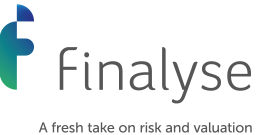By Pedro Ribeiro, Senior Consultant
Following the introduction of Solvency 2, the European Commission and Council have decided to continue their efforts to develop a common regulatory framework for the financial industry to strengthen its governance. On 13th January 2017, the regulators laid down a new milestone in the pensions market with IORP2, the new directive that replaced the existing and much amended directive 2003/41/CE. This new directive had to be transposed into national laws before 13th January 2019.
How do pension funds work
Institutions for occupational retirement provisions, frequently called pension funds, are financial institutions that manage collective retirement schemes for employers in order to provide a retirement benefit to their employees. The employer, commonly denominated as sponsor, regularly pays a contribution in accordance with a pension scheme to an investment vehicle which invests these contributions on the markets to finally provide a retirement benefit to the employee, commonly denominated as the member, at the retirement age. Occupational pensions are known as the “second pillar” of the pension systems, the “first pillar” being state-based social security pensions and the “third pillar” being non-compulsory private pension savings for persons.
Governance of pension funds
Up to now, IORPs were governed under a variety of national laws more or less following the outlines of the 2003/41/CE directive, which laid down basic requirements for occupational pension funds and their management and framed the rules regarding the investment policies so that IORPs were obliged to invest the assets prudently and in the best interest of members and beneficiaries.
However, considering the economic and market developments since 2003, with, among others, the subprime mortgage crisis in 2008, a significant need for a sound governance of financial institutions has arisen, particularly with regard to providing the necessary information to members and beneficiaries at the same time. Some failures of pension funds in the EU have resulted in shrinkages or curtailments in members and beneficiaries’ rights, which clearly shows a deep need to strengthen governance. This is particularly relevant due to the rise of “defined contributions” pension schemes, where the member bears the investment risk with no guarantee of pay-out, and the decline of “defined benefits” pension schemes that provide a contractual obligation of retirement benefits pay-out. These were the main motivations for the European authorities to draft a relevant amendment to the existing directive.
Amendment to the existing directive - a robust risk management framework
This resulted in IORPs facing new legal requirements in January 2019 and having to implement a robust risk management framework by ensuring an effective system of governance to protect the final interests of members and beneficiaries.
General governance requirements, management remunerations policies and a fit and proper policy must be implemented to constitute an effective system of governance that can provide sound and prudent management, which drives an adequate and transparent organizational structure and implements an effective internal control system.
Furthermore, the directive implements 3 additional key functions to drive the governance structure of IORPs: risk management, internal audit and actuarial function, to support the board of directors in carrying out their tasks.
Risk management, internal audit and actuarial functions for IORPs
These functions will drive the general governance requirements and be responsible for documenting the policies necessary to manage the operational and compliance processes.
Strategies, processes and new reporting procedures should be adapted so that the risks are framed and duly reported to the supervisory board. For outsourced activities, the implemented risk management system shall also cover the risks that can occur in the IORPs or in the undertakings to whom tasks and activities have been outsourced.
This requires that an Own Risk Assessment is regularly performed, framing the different assessments of the risk management system. Among others, an assessment of the effectiveness of the system, a definition of the fund’s risk objectives and tolerance limits, an assessment of the risk exposure measured through stress tests and scenario analyses and a forward looking of risks to be able to meet the IORPs obligations towards its members and beneficiaries must be introduced.
The aim of the IORP 2 directive
The rules have been defined and enforced concerning the information to be disclosed to members and beneficiaries. The aim is to provide them with all the necessary information concerning the evolution of their future retirement benefits, as well as, if provided, the given coverage of biometrical guarantees.
To be fully compliant, some complementary information must be provided to national and European authorities, for instance the basic annual accounts and annual reports. IORPs also have to provide an Own Risk Assessment, asset and liabilities studies, actuarial valuations and assumptions, as well as a statement of investment policy principles, and statistical reports must be provided to the European central bank and to the EIOPA.
Finally, the aim of the IORP 2 directive is to implement a sturdy risk management framework with 3 key functions in the management process, with the aim of having an equitable spread of risks and benefits between generations, promoting a better diffusion of information to their members and beneficiaries, as well as a better communication with the relevant competent authorities.
Finalyse InsuranceFinalyse offers specialized consulting for insurance and pension sectors, focusing on risk management, actuarial modeling, and regulatory compliance. Their services include Solvency II support, IFRS 17 implementation, and climate risk assessments, ensuring robust frameworks and regulatory alignment for institutions. |

Our Insurance Services
Check out Finalyse Insurance services list that could help your business.
Our Insurance Leaders
Get to know the people behind our services, feel free to ask them any questions.
Client Cases
Read Finalyse client cases regarding our insurance service offer.
Insurance blog articles
Read Finalyse blog articles regarding our insurance service offer.
Trending Services
BMA Regulations
Designed to meet regulatory and strategic requirements of the Actuarial and Risk department
Solvency II
Designed to meet regulatory and strategic requirements of the Actuarial and Risk department.
Outsourced Function Services
Designed to provide cost-efficient and independent assurance to insurance and reinsurance undertakings
Finalyse BankingFinalyse leverages 35+ years of banking expertise to guide you through regulatory challenges with tailored risk solutions. |

Trending Services
AI Fairness Assessment
Designed to help your Risk Management (Validation/AI Team) department in complying with EU AI Act regulatory requirements
CRR3 Validation Toolkit
A tool for banks to validate the implementation of RWA calculations and be better prepared for CRR3 in 2025
FRTB
In 2025, FRTB will become the European norm for Pillar I market risk. Enhanced reporting requirements will also kick in at the start of the year. Are you on track?
Finalyse ValuationValuing complex products is both costly and demanding, requiring quality data, advanced models, and expert support. Finalyse Valuation Services are tailored to client needs, ensuring transparency and ongoing collaboration. Our experts analyse and reconcile counterparty prices to explain and document any differences. |

Trending Services
Independent valuation of OTC and structured products
Helping clients to reconcile price disputes
Value at Risk (VaR) Calculation Service
Save time reviewing the reports instead of producing them yourself
EMIR and SFTR Reporting Services
Helping institutions to cope with reporting-related requirements
Finalyse PublicationsDiscover Finalyse writings, written for you by our experienced consultants, read whitepapers, our RegBrief and blog articles to stay ahead of the trends in the Banking, Insurance and Managed Services world |

Blog
Finalyse’s take on risk-mitigation techniques and the regulatory requirements that they address
Regulatory Brief
A regularly updated catalogue of key financial policy changes, focusing on risk management, reporting, governance, accounting, and trading
Materials
Read Finalyse whitepapers and research materials on trending subjects
Latest Blog Articles
Contents of a Recovery Plan: What European Insurers Can Learn From the Irish Experience (Part 2 of 2)
Contents of a Recovery Plan: What European Insurers Can Learn From the Irish Experience (Part 1 of 2)
Rethinking 'Risk-Free': Managing the Hidden Risks in Long- and Short-Term Insurance Liabilities
About FinalyseOur aim is to support our clients incorporating changes and innovations in valuation, risk and compliance. We share the ambition to contribute to a sustainable and resilient financial system. Facing these extraordinary challenges is what drives us every day. |

Finalyse CareersUnlock your potential with Finalyse: as risk management pioneers with over 35 years of experience, we provide advisory services and empower clients in making informed decisions. Our mission is to support them in adapting to changes and innovations, contributing to a sustainable and resilient financial system. |

Our Team
Get to know our diverse and multicultural teams, committed to bring new ideas
Why Finalyse
We combine growing fintech expertise, ownership, and a passion for tailored solutions to make a real impact
Career Path
Discover our three business lines and the expert teams delivering smart, reliable support


